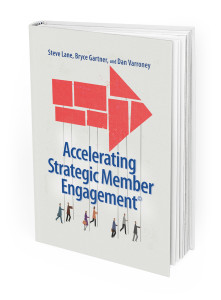 4 Pain Point Takeaways. Regardless of the procedure, Hospital stays are daunting for any patient. A recent experience showed that under the right conditions a patient’s pain expectations can be addressed. Upon discharge it was clear that a chorus of Doctors, Nurses, Physical Therapists, Physicians’ Assistants, hospital staff and volunteers had successfully addressed the patient’s pain point needs. 4 Pain Point Takeaways learned from this experience can be as powerful if they are applied in the Association marketplace.
4 Pain Point Takeaways. Regardless of the procedure, Hospital stays are daunting for any patient. A recent experience showed that under the right conditions a patient’s pain expectations can be addressed. Upon discharge it was clear that a chorus of Doctors, Nurses, Physical Therapists, Physicians’ Assistants, hospital staff and volunteers had successfully addressed the patient’s pain point needs. 4 Pain Point Takeaways learned from this experience can be as powerful if they are applied in the Association marketplace.
Engagement, Compassion, and Skill
The complexities facing Hospitals and Associations are striking. What are the most obvious? Both face a fluid and complex marketplace. How so? All encompass market needs, constantly changing technologies, cost pressure and patients/members who vote with their feet and go somewhere else.
4 Pain Point Takeaways:
1. Engagement
- Consistently identify, quantify and track pain points
- Partner with members to discuss and formulate solutions
- Members experience a “We focused” approach to challenges and solutions
- Members perceive the pain point solutions as connected to personal and business objectives
2. Culture of Compassion
- Create, reinforce, and augment a member centered culture
- Recognize and enthusiastically encourage compassionate centered staff
- Respond timely and appropriately
- Always establish and reinforce bonds of empathy
3. Skill
- Hire highly skilled team members
- Provide training to maintain high skill levels
- Benchmark skill levels against competition, make necessary adjustments
4. Data
- Survey members and determine if pain point needs have been addressed
- Establish performance metrics to measure pain point satisfaction
- Quickly identify and address performance improvement needs
- Implement performance reward programs recognizing top performers
Community and the Human Connection
Another important lesson from the Hospital experience? Never discount or dismiss the power of Community and the Human Connection. After all, patients select Hospitals in the same way Association prospects make choices on where they will be the most comfortable. In a recent Post (http://bit.ly/1aTb6xM), the importance of community and human connection was cited in Starbucks global success story. Starting with a cup of coffee, Starbucks’ success, in large part, relies on human connection and the sense of community they provide.
In the end, a sense of community in today’s competitive world attracts patients as it does Association members.
4 Pain Point Takeaways
Isaac Asimov once said that “Self-education is, I firmly believe, the only kind of education there is.” Surgery and a two day hospital stay provided pain relief and a learning experience. The Hospital Community, through it’s impressive performance, showed how powerful pain point strategies can work. Using these approaches, Associations gain added capacity, helping them build member connections and lasting relationships.
For a free copy of the “Accelerating Strategic Member Engagement” eBook, request your copy at www.potomaccore.com.





